Ditapis dengan

Forty years of maritime solution that changed the world
Forty years ago this year, sixty of the larges international dredging from seventeen countries decided the time had come to inform the word about the fundamental need for dredging and its benefits. this is how the international association of dredging campanies was born. it the following years IADC grew to be recognised as the umbrella organisation for the private dredging industry.
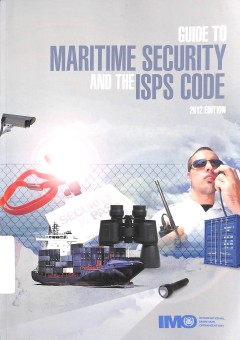
Guide to maritime security and the ISPS code
This guide is intended to provide consolidated guidance on the implementation of the security related amendments to the International Convention on the Safety of Life at Sea, 1974 (SOLAS Convention) which were adopted in December 2002. These amendments included a new chapter XI-2 in the SOLAS Convention, "Special measures to enhance maritime security", which enshrined the International Ship and…
- Edisi
- 2012 Ed.
- ISBN/ISSN
- 978-92-801-1544-4
- Deskripsi Fisik
- xv, 369 p., 33 cm
- Judul Seri
- -
- No. Panggil
- REF MR IMO g
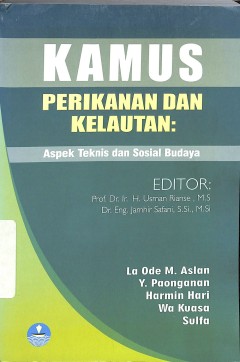
Kamus perikanan dan kelautan : aspek teknis dan sosial budaya
Kamus ini berisi mengenai istilah yang relevan mengenai sektor perikanan dan kelautan serta aspek budaya dan teknologi yang relevan
- Edisi
- -
- ISBN/ISSN
- 978-602-8161-59-6
- Deskripsi Fisik
- ix, 438 p., 21 cm
- Judul Seri
- -
- No. Panggil
- REF MR ASL k
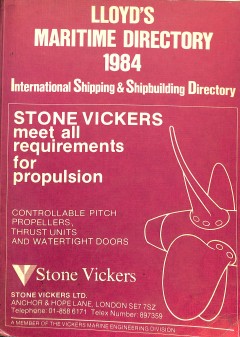
Lloyd's maritime directiory 1984
Directory content about shipowners, Towage, salvage, ship Management service, shipbuilders, marine engine builder, maritime and related organisation
- Edisi
- -
- ISBN/ISSN
- -
- Deskripsi Fisik
- 941 p : 28 cm
- Judul Seri
- -
- No. Panggil
- REF MR CUN l C.1
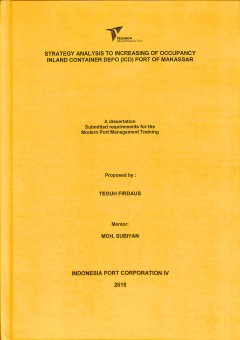
Strategy analysis to increasing of occupancy inland container depo (ICD) port…
Inland Container Depo (ICD) is one of the facilities owned by PT (Persero) Pelabuhan Indonesia IV of Makassar. The Average growth of containers through the Makassar. The average growth of containers through the Makassar Container Terminal 9%, but it is contrary to the ICD occupancy decreased from year to year due to there are some container depot outside the port as a competitor. So that the …
- Edisi
- -
- ISBN/ISSN
- -
- Deskripsi Fisik
- v, 70 p, 30 cm; tabel
- Judul Seri
- -
- No. Panggil
- TD PO FIR s
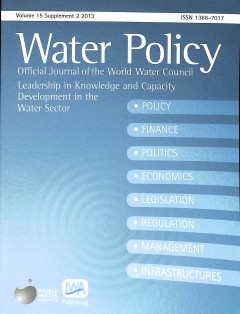
Water policy : official journal of the world water council leadership in know…
Water policy : official journal of the world water council leadership in knowledge and capacity development in the water sector
- Edisi
- Vol. 15 Supplemet 2 2013
- ISBN/ISSN
- 1366-7017
- Deskripsi Fisik
- 299 p.; illus; 28 cm
- Judul Seri
- Vol. 15 Supplemet 2 2013
- No. Panggil
- LC 387.1 PRI w

Modern Port Management Training
This document is intended to study the saving cost of RTG, using electrification comparing usage of diesel engine. This study is intended to give an idea of how much costs can be in saving from the use of electrical shore power connection. The big challenge for the management of PT. Pelabuhan Indonesia IV (Persero) especially Makassar Container Terminal to be abl…
- Edisi
- -
- ISBN/ISSN
- -
- Deskripsi Fisik
- 24 p, 30 cm
- Judul Seri
- -
- No. Panggil
- PO DJU m
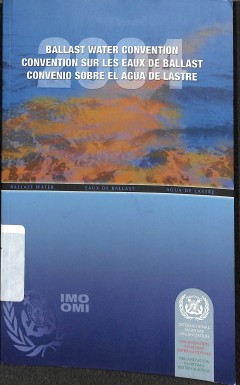
Ballast Water Convention : 2004
- Edisi
- -
- ISBN/ISSN
- 978-92-801-0033-4
- Deskripsi Fisik
- iii, 138p
- Judul Seri
- -
- No. Panggil
- MR IMO b
- Edisi
- -
- ISBN/ISSN
- 978-92-801-0033-4
- Deskripsi Fisik
- iii, 138p
- Judul Seri
- -
- No. Panggil
- MR IMO b
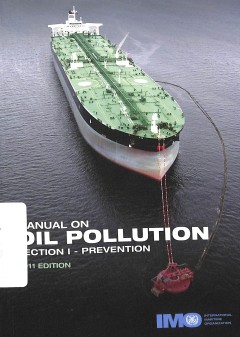
Manual on oil pollution : section I - prevention
- Edisi
- 2011 Edition
- ISBN/ISSN
- 978-92-801-4244-0
- Deskripsi Fisik
- vi, 138 hlm., 21 cm
- Judul Seri
- -
- No. Panggil
- TXT MR MAN m
- Edisi
- 2011 Edition
- ISBN/ISSN
- 978-92-801-4244-0
- Deskripsi Fisik
- vi, 138 hlm., 21 cm
- Judul Seri
- -
- No. Panggil
- TXT MR MAN m
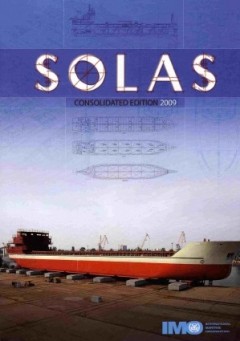
Solas : consolidated edition 2009
Of all the international conventions dealing with maritime safety, the most important is the International Convention for the Safety of Life at Sea, better known as SOLAS, which covers a wide range of measures designed to improve the safety of shipping. The Convention is also one of the oldest of its kind: the first version was adopted in 1914 following the sinking of the Titanic with the loss …
- Edisi
- Fifth Edition
- ISBN/ISSN
- 978-92-801-1505-5
- Deskripsi Fisik
- viii, 418 hlm., 33 cm
- Judul Seri
- -
- No. Panggil
- TXT MR IMO s
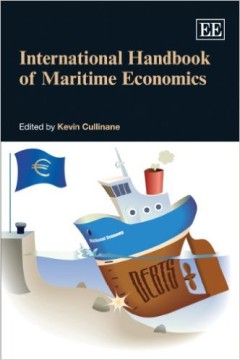
International Handbook of Maritime Economics
This timely and comprehensive new Handbook brings together an unrivaled group of distinguished scholars and practitioners to provide in-depth analysis and a contemporary perspective on a wide-ranging array of topics in maritime economics. Inherently global in nature, the economics of the maritime sector has proved pivotal in facilitating globalization and international trade. This HandbOOK o…
- Edisi
- -
- ISBN/ISSN
- 978-1-84720-933-7
- Deskripsi Fisik
- xix, 497 hlm., 21 cm
- Judul Seri
- -
- No. Panggil
- TXT MR CUL i
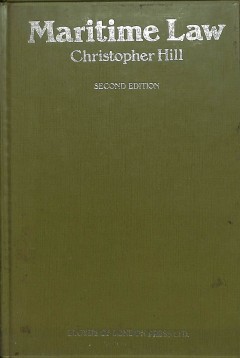
Maritime Law
This book have several chapters become incresingly in need of updating. For example, the chapter on Limitation of Lialibility has, in this second edition, been given greater depth on the 1976 (London) Convention in view of itsnow imminent coming into effect. Also the very significant and controversial, court ruling in The Marion Case (at House of Lords level) has been written into the cahapter.…
- Edisi
- Second
- ISBN/ISSN
- 1-85044-045-X
- Deskripsi Fisik
- xxix, 382 p., : illus : 24 cm
- Judul Seri
- -
- No. Panggil
- TXT MR HIL m C.1
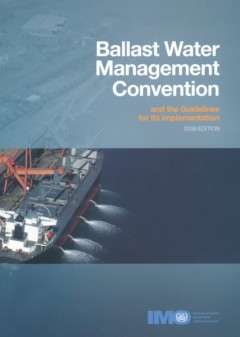
Ballast water management convention and the guidlines for its implementation
This edition reproduces : the text of the international Convention for the Control and Management of Ships 'Ballast Water and Sediments, 2004' 1. The text of the International Convention for the Control and Management of Ships's Ballast Water and Sedimens, on 2004; 2. Four Conference resolutions adopted at the International Conference on Ballast Water Management for Ships held at IMO's Headqu…
- Edisi
- -
- ISBN/ISSN
- 978-92-801-1503-1
- Deskripsi Fisik
- xi, 234 p., 21 cm
- Judul Seri
- -
- No. Panggil
- TXT MR IMO b

International convention on civil liability for buker oil pollution damage, 2001
The purpose of the convention is to ensure the payment of adequate, prompt and effective compensation to victims of pollution caused by the escape or discharge of bunker oil from ships
- Edisi
- 2001 Ed.
- ISBN/ISSN
- 92-801-0032-7
- Deskripsi Fisik
- ix, 70 p., 21 cm
- Judul Seri
- -
- No. Panggil
- TXT MR IMO i

Section II manual on oil pollution : contingency planning
This publication, prepared by the Marine Environment Protection Committee of the International Maritime Organization (IMO). Supersedes the 1988 edition of section II of the Manual on Oil Pollution.
- Edisi
- 1995 Ed.
- ISBN/ISSN
- 978-92801-1330-3
- Deskripsi Fisik
- vii, 74 p., 21 cm
- Judul Seri
- -
- No. Panggil
- TXT MR IMO s
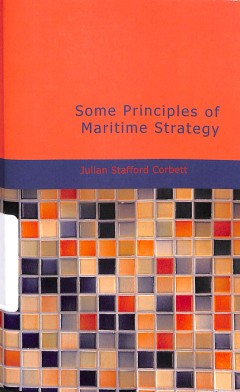
Some principles of maritime strategy
This is a new and freshly published edition of this culturally important work, which is now, at last, again available to you. Enjoy this classic work today. These selected paragraphs distill the contents and give you a quick look inside: It discloses, in short, that naval strategy is not a thing by itself, that its problems can seldom or never be solved on naval considerations alone, but that…
- Edisi
- -
- ISBN/ISSN
- 978-142-648-436-0
- Deskripsi Fisik
- 277 p., ; illus : 21 cm
- Judul Seri
- -
- No. Panggil
- TXT MR COR s

Modern Maritime Law Volume 1: Jurisdiction and Risks
The first volume tackles a wealth of complex jurisdictional aspects, ranging from the enforcement of maritime claims to a detailed analysis of the conditions of arrest of ships, including reconsideration of wrongful arrest, beneficial ownership, forum non-convenience and limitations upon the jurisdiction of the English courts. Key features of Volume One: Expert analysis of the very latest case …
- Edisi
- 3rd ed.
- ISBN/ISSN
- 978-0-415-83516-9
- Deskripsi Fisik
- liii, 370p. ; 25cm.
- Judul Seri
- -
- No. Panggil
- TXT MR MAN m

Modern Maritime Law Volume 2: Managing Risks and liabilities
- Edisi
- Third ed. vol.2
- ISBN/ISSN
- 978–1–31586–314–6
- Deskripsi Fisik
- lxxxvi, 989 p
- Judul Seri
- -
- No. Panggil
- TXT MR MAN m
- Edisi
- Third ed. vol.2
- ISBN/ISSN
- 978–1–31586–314–6
- Deskripsi Fisik
- lxxxvi, 989 p
- Judul Seri
- -
- No. Panggil
- TXT MR MAN m
Maritime Economics
For 5000 years shipping has served the world economy and today it provides a sophisticated transport service to every part of the globe. Yet despite its economic complexity, shipping retains much of the competitive cut and thrust of the “perfect” market of classical economics. This blend of sophisticated logistics and larger than life entrepreneurs makes it a…
- Edisi
- 3rd Edition
- ISBN/ISSN
- 978-0-415-275583
- Deskripsi Fisik
- 815 p., 24 cm
- Judul Seri
- -
- No. Panggil
- LC 387.1 STO m

Radar and Electronic Navigation
The electronic aids available for marine navigation become more accurate and ambitious year by year. Indeed, development has been so rapid that, for its fiifth edition, this well-established and cmprehensive guide has been largely rewritten. The chapters on underwater navigational aids and the Decca and Loran system have been substantially revised, for example, and there are new chapters on the…
- Edisi
- 5
- ISBN/ISSN
- 0-4-8-00272-7
- Deskripsi Fisik
- 376 p., : illus : index : 22 cm
- Judul Seri
- -
- No. Panggil
- TXT MR SON r C.1

Enforcement of maritime claims
The fourth edition consists of consideration of all aspects of the jurisdiction of English courts and arbitrators over maritime claims, applicable law, judgments, remedies and security interests, including the continuing critical impact of membership of the European Union. The comprehensive updating encompasses legislative, convention and judicial developments since the publication of the last …
- Edisi
- 4
- ISBN/ISSN
- 1-85044-001-8
- Deskripsi Fisik
- x, 470 hlm : 26 cm
- Judul Seri
- -
- No. Panggil
- TXT MR JAC e
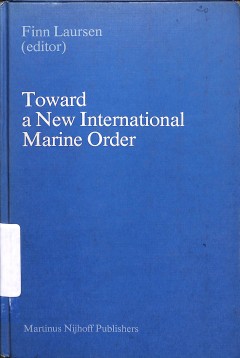
Toward a new international marine order
content this book about UNCLOS, National Encolosure, and the common heritage, resources, military uses, and Ecology, The European community and law of the sea, deepseabed mining.
- Edisi
- -
- ISBN/ISSN
- -
- Deskripsi Fisik
- xv, 198 p : 24 cm
- Judul Seri
- -
- No. Panggil
- TXT MR LAU t C.1

Lloyd's maritime atlas
- Edisi
- -
- ISBN/ISSN
- -
- Deskripsi Fisik
- 106 hlm.; illus : 28 cm
- Judul Seri
- -
- No. Panggil
- TXT MR DAV l C.1
- Edisi
- -
- ISBN/ISSN
- -
- Deskripsi Fisik
- 106 hlm.; illus : 28 cm
- Judul Seri
- -
- No. Panggil
- TXT MR DAV l C.1
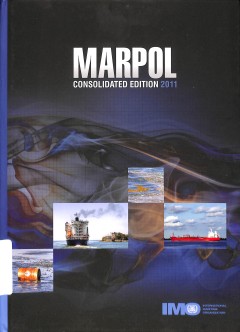
Marpol : consolidated edition 2011 - Articles, protocols, annexes and unified…
The International Convention for the Prevention of Pollution from Ships, 1973 (MARPOL Convention), is concerned with preserving the marine environment through the prevention of pollution by oil and other harmful substances and the minimization of accidental discharge of such substances. Its technical content is laid out in six Annexes, the first five of which were adopted by the 1973 Convention…
- Edisi
- Consolidated Ed. 2011
- ISBN/ISSN
- 978-92-801-1532-1
- Deskripsi Fisik
- ix, 447 p., 33 cm
- Judul Seri
- -
- No. Panggil
- TXT MR IMO m

Use of the Delphi method to determine the constraints that affect the future …
Who would have foreseen 40 years ago the launching of an 18 000 TEU container ship? The unprecedented growth of such ships presents an increasing challenge for port infrastructure planners. The paper concludes that during the next 20 years, the growth of container ships will depend on factors related to supply and demand, and to external factors. These factors will be defined as the constraints…
- Edisi
- Vol. 42, No. 3,
- ISBN/ISSN
- 263–277
- Deskripsi Fisik
- 16 p.
- Judul Seri
- Maritime Policy & Management
- No. Panggil
- ATC LO PAZ u

World container port throughput follows lognormal distribution
We show in this paper that the throughput data for the top 300 container ports reported each year by the various authorities follows a simple truncated lognormal distribution. This surprising phenomenon repeats itself every year from 1982 to 2006, despite many tumultuous changes in the container shipping world. The empirical data suggests that Gibrat’s Law of proportionate growth indeed holds…
- Edisi
- VOL. 37, NO. 4, 401–426
- ISBN/ISSN
- 1464–5254
- Deskripsi Fisik
- 28 p.
- Judul Seri
- Maritime Policy & Management: The flagship journal of international shipping and port research
- No. Panggil
- ATC LO DIN w

Will the Northern Sea Route ever be a viable alternative?
Since the decline in sea ice north of Russia became clear in the early 1990s, ideas of using the northern route for sea transport between Europe and Asia have taken a hold of the shipping community. Large and small research projects with varying complexity and results have looked into this option. In this article, the available information is studied in detail and four scenarios for the costs a…
- Edisi
- 2016
- ISBN/ISSN
- 1464-5254
- Deskripsi Fisik
- 16 p.
- Judul Seri
- Maritime Policy & Management The flagship journal of international shipping and port research
- No. Panggil
- ATC LO PRU w

US container terminal leasing and pricing
Income from leasing container terminals and terminal facilities over the last 15 years has risen from miniscule levels to a point where it now represents a majority of the total income at some us ports [l]. This paper reviews the methods used to lease container terminals and terminal facilities, examines the leasing methodologies and pricing approaches used by us public port authorities, and di…
- Edisi
- VOL. 11, NO. 4, 277-288
- ISBN/ISSN
- -
- Deskripsi Fisik
- 13 p.
- Judul Seri
- Maritime Policy & Management: The flagship journal of international shipping and port research
- No. Panggil
- ATC LO DOW u

Unveiling co-operative networks and ‘hidden families’ in the container po…
Over the last few years, the progressive scarcity of land for greenfield projects in ports and the enormous financial resources required to realize new terminal facilities have induced international terminal operators (ITOs) to enter in various types of agreements. In particular, ITOs have growingly resorted to equity joint-ventures (EJVs) to develop new infrastructures and share project risks.…
- Edisi
- Vol. 41, No. 4, 384–404
- ISBN/ISSN
- -
- Deskripsi Fisik
- 23 p.
- Judul Seri
- Maritime Policy & Management: The flagship journal of international shipping and port research
- No. Panggil
- ATC LO PAR u

Unloading facilities at an iron-ore terminal
In this paper a project undertaken by the author is described to illustrate modifications which may be necessary to the type of analysis given in an earlier paper [I] when difficulties arise from various practical considerations. The problem examined deals with the installation of unloading facilities at a purpose-built iron ore terminal at a'steelworks. However, some of the data quoted has bee…
- Edisi
- 1976, 3, 237-243
- ISBN/ISSN
- -
- Deskripsi Fisik
- 9 p.
- Judul Seri
- Maritime Studies and Management
- No. Panggil
- ATC LO GRI u

The terminalization of supply chains: reassessing the role of terminals in po…
The paper discusses how logistics service providers are using terminals in their supply chains. It argues that an increasing ‘terminalization’ of supply chains is unfolding, whereby seaport and inland terminals are taking up a more active role in supply chains by increasingly confronting market players with operational considerations such as imposing berthing windows, dwell time charges, tr…
- Edisi
- VOL. 36, NO. 2, 165–183
- ISBN/ISSN
- 1464–5254
- Deskripsi Fisik
- 21 p.
- Judul Seri
- Maritime Policy & Management: The flagship journal of international shipping and port research
- No. Panggil
- ATC LO ROD t

The growth potential of container shipping on the Yangtze River
Despite the rapid economic growth in the Yangtze River Delta area, the Yangtze River itself is lagging behind as measured by the ratio of container volume to total freight volume. According to the Ministry of Communications’ statistics, more than 70% of cargoes generated in the Yangtze Valley are suitable for containerized transport, but, at this time, only a fraction of these cargoes are act…
- Edisi
- VOL. 35, NO. 6, 535–549
- ISBN/ISSN
- 1464–5254
- Deskripsi Fisik
- 17 p.
- Judul Seri
- Maritime Policy & Management: The flagship journal of international shipping and port research
- No. Panggil
- ATC LO VEE t

The containerships of 1999
Ports are the next candidates for radical change. A jumbo containership can move boxes at sea for less than one cent per ton mile, and fast double-stack trains move them overland for less than three cents. A container can cross the Atlantic for $300, but the terminals consume $500 and too much time. The port of 1999 will work 24 hours and seven days a week. It will be manned by a few well-paid …
- Edisi
- VOL. 16, NO. 2, 133-145
- ISBN/ISSN
- 1464-5254
- Deskripsi Fisik
- 14 p.
- Judul Seri
- Maritime Policy & Management
- No. Panggil
- ATC LO EYR t

The Caribbean basin: adjusting to global trends in containerization
Positioned strategically between major east–west and north–south trading routes, the Caribbean basin has become a locus of new service configurations in container shipping. Over the last decade global shipping lines have been restructuring their service networks in the region in order to integrate local services with the newly rationalized intercontinental connections. By comparing service …
- Edisi
- VOL. 32, NO. 3, 245–261
- ISBN/ISSN
- 1464–5254
- Deskripsi Fisik
- 19 p.
- Judul Seri
- Maritime Policy & Management: The flagship journal of international shipping and port research
- No. Panggil
- ATC LO MCC t

Terminal concessions in seaports revisited
In many countries around the world, governments and public port authorities have retreated from port operations in the belief that enterprise-based port services and operations would allow for greater flexibility and efficiency in the market (through more competition) and a better response to consumers’ demands. In this new environment, the awarding of port terminals to private operators …
- Edisi
- JANUARY 2012, VOL. 39, NO. 1, 1–5
- ISBN/ISSN
- 1464–5254
- Deskripsi Fisik
- 7 p.
- Judul Seri
- Maritime Policy & Management: The flagship journal of international shipping and port research
- No. Panggil
- ATC LO NOT t

System reliability for a multistate intermodal logistics network with time wi…
Network structures have been diffusely adopted in logistics systems, where the most critical target is completing the delivery within the promised timeframe. This paper focuses on a single commodity in a multistate intermodal logistics network (MILN) with transit stations and routes to involve three parameters: a route’s capacity, delivery time and time window. There is a carrier along each r…
- Edisi
- 2016
- ISBN/ISSN
- 1366-588X
- Deskripsi Fisik
- 14 p.
- Judul Seri
- International Journal of Production Research
- No. Panggil
- ATC LO LIN s

Quality indicators and capacity calculation for RoRo terminals
Road freight transportation has increased dramatically over recent years along with its impacts such as congestion, noise, and pollution. As a result, European and US governments have started policies to promote alternatives to road transportation, such as logistic chains containing a Short Sea Shipping (SSS) link. Road is, by definition, a more flexible means of transportation than shipping, w…
- Edisi
- Vol. 33, No. 8, December 2010
- ISBN/ISSN
- 1029-0354
- Deskripsi Fisik
- 24 p.
- Judul Seri
- Transportation Planning and Technology
- No. Panggil
- ATC LO FUS q

Optimal investment priority in container port development
The aim of this paper is to develop realistic and relevant investment planning models for inland container transportation systems. The models may be utilized to identify the most eOEective investment plan for inland transportation infrastructure development and to evaluate the inland container transportation system. The procedure enables determination of the optimal locations, sizes and time of…
- Edisi
- VOL. 28, NO. 2, 109± 123
- ISBN/ISSN
- 1464± 5254
- Deskripsi Fisik
- 17 p.
- Judul Seri
- Maritime Policy & Management: The flagship journal of international shipping and port research
- No. Panggil
- ATC LO KOH o

Network effects in the East Asia container ports industry
This paper proposes an integrated set of 4Cs indices, namely, centrality index, competition index, congestion index and concentration index to examine network effects in the East Asia container port industry. Empirical analysis confirms that larger ports enjoy greater direct network effects related to economies of scale, whereas, smaller ports leverage on indirect network effects to widen their…
- Edisi
- VOL. 39, NO. 4, 369–386
- ISBN/ISSN
- 1464–5254
- Deskripsi Fisik
- 20 p.
- Judul Seri
- Maritime Policy & Management: The flagship journal of international shipping and port research
- No. Panggil
- ATC LO LOW n

Maritime logistics in Asia
On 11 July 1404, Zheng He (AD 1371–1435) departed from the east coast of China on his first voyage to the West. Nearly 90 years later, on 3 August 1492, Christopher Columbus departed on his first voyage to the other side of the world. Global navigation opened a new chapter in human history. Since then, maritime logistics has indeed turned the earth into the global village that we see today, a…
- Edisi
- VOL. 35, NO. 1, 1–3
- ISBN/ISSN
- 1464–5254
- Deskripsi Fisik
- 3 p.
- Judul Seri
- Maritime logistics in Asia
- No. Panggil
- ATC LO EDI m

Linking ocean container carrier capabilities to shipper–carrier relationshi…
As outsourcing and offshoring continue to expand, the ocean container industry serves a critical and still increasing role in supporting global trade. Yet, perceived commoditization and intense price competition among ocean container carriers limit opportunities for competitive advantage and formation of long-term shipper–carrier relationships. This environment ultimately yields an unhealthy …
- Edisi
- 2016
- ISBN/ISSN
- 1464-5254
- Deskripsi Fisik
- 18 p.
- Judul Seri
- Maritime Policy & Management The flagship journal of international shipping and port research
- No. Panggil
- ATC LO MAL l

Identifying Country Environments to Increase Container Traffic Volumes
We witnessed significant technological changes in shipping, including the development of jet aircraft engines and the use of containerization in ocean shipping. In the maritime industry, more than 90 percent of international cargo moves through seaports, and 80 percent of seaborne cargo moves in containers. This shows that the importance of seaborne trade, in particular, trade by containers. Th…
- Edisi
- Volume 27 Number 1 April 2011 pp. 157-185
- ISBN/ISSN
- -
- Deskripsi Fisik
- 30 p.
- Judul Seri
- The Asian Journal of Shipping and Logistics
- No. Panggil
- ATC LO CHO i

Impact of scale increase of container ships on the generalised chain cost
In recent years, an increase in the size of the container ships could be observed. The question is how these larger ships will influence the total generalised costs from a port of loading to a destination in the European hinterland. The second question is whether a scale increase of the container ships on other loops, such as a loop from the United States to Europe, has the same impact on the g…
- Edisi
- Vol. 43, No. 2, 192–208
- ISBN/ISSN
- 1464-5254
- Deskripsi Fisik
- 18 p.
- Judul Seri
- Maritime Policy & Management The flagship journal of international shipping and port research
- No. Panggil
- ATC LO HAS i

Greening ports and maritime logistics: A review
This paper aims to examine the past and present research on ‘green ports and maritime logistics’ in order to identify established research streams and fertile research areas with potential for future investigations. Using rigorous bibliometric and network analysis tools, the paper completes a systemic mapping of the existing literature and identifies the key investigators, collaboration pat…
- Edisi
- 2015
- ISBN/ISSN
- -
- Deskripsi Fisik
- 15 p.
- Judul Seri
- Greening ports and maritime logistics
- No. Panggil
- ATC LO DAV g

Factors influencing container carriers’ use of coastal shipping
Coastal shipping is one of the most sustainable and economically competitive modes of transportation. This study employs the analytic hierarchy process (AHP) method to determine the importance of various factors influencing container carriers’ use of coastal shipping. A three-level hierarchical structure with the 17 attributes is proposed and tested. A previous AHP survey in Taiwan has indica…
- Edisi
- Vol. 41, No. 2, 192–208,
- ISBN/ISSN
- -
- Deskripsi Fisik
- 19 p.
- Judul Seri
- Maritime Policy & Management: The flagship journal of international shipping and port research
- No. Panggil
- ATC LO YAN f

Extending the lifecycle of container mainports in upstream urban locations
My article in the June 1996 issue of this journal considered the relocation of container handling facilities for the largest deep-sea vessels from upstream urban ports to downstream terminals at coastal locations [I]. It was argued in the article that two upstream urban ports (Antwerp and Hamburg) have been unable to relocate their mainport function due principally to territorial (and hence pol…
- Edisi
- VOL. 24, NO. 3, 299-301
- ISBN/ISSN
- -
- Deskripsi Fisik
- 5 p.
- Judul Seri
- Maritime Policy & Management: The flagship journal of international shipping and port research
- No. Panggil
- ATC LO BAI e

Estimating trade-off among logistics cost, CO2 and time: A case study of cont…
One of the basic necessary conditions for successful implementation of policies which encourage the use of intermodal freight transportation systems is to understand ‘‘what the desired mode share of the intermodal freight transportation systems is’’ and also ‘‘what the trade-off relationships among various concerns such as logistics cost, time and CO2 emissions are’’. The object…
- Edisi
- Vol. 16, No. 1, March 2012, 85–98
- ISBN/ISSN
- 2161-6779
- Deskripsi Fisik
- 16 p.
- Judul Seri
- International Journal of Urban Sciences
- No. Panggil
- ATC LO PAR e

Enhanced logistics service provider framework for higher integration and effi…
The concept of maritime logistics results from the convergence of maritime transport and supply chains. The paper aims to propose an enhanced logistics service provider (LSP) framework which facilitates LSPs to integrate supply chains in an optimal manner by utilising their unique expertise and experience. In the framework, the enhanced LSP serves as the single contact point for shippers and as…
- Edisi
- Vol. 17, No. 2, 89–113
- ISBN/ISSN
- -
- Deskripsi Fisik
- 27 p.
- Judul Seri
- International Journal of Logistics Research and Applications: A Leading Journal of Supply Chain Management
- No. Panggil
- ATC LO LAM e

Empty container reposition planning for intra-Asia liner shipping
This paper addresses empty container reposition planning by plainly considering safety stock management and geographical regions. This plan could avoid drawback in practice which collects mass empty containers at a port then repositions most empty containers at a time. Empty containers occupy slots on vessel and the liner shipping company loses chance to yield freight revenue. The problem is dr…
- Edisi
- VOL. 35, NO. 5, 469–489
- ISBN/ISSN
- 1464–5254
- Deskripsi Fisik
- 22 p.
- Judul Seri
- Maritime Policy & Management: The flagship journal of international shipping and port research
- No. Panggil
- ATC LO FEN e

Efficiency assessment of container operations of shipping agents in Spanish p…
In this paper a two-stage Data Envelopment Approach is used to assess the relative efficiency of container shipping agents operating at Spanish ports, and studying the factors influencing it. In the first stage, an input-oriented, Variable Returns to Scale (VRS) model is used to compute efficiency scores of the different shipping agents. The model considers labor as input, and numbers of loaded…
- Edisi
- 2015
- ISBN/ISSN
- -
- Deskripsi Fisik
- 19 p.
- Judul Seri
- Maritime Policy & Management: The flagship journal of international shipping and port research
- No. Panggil
- ATC LO GUT e
 Karya Umum
Karya Umum  Filsafat
Filsafat  Agama
Agama  Ilmu-ilmu Sosial
Ilmu-ilmu Sosial  Bahasa
Bahasa  Ilmu-ilmu Murni
Ilmu-ilmu Murni  Ilmu-ilmu Terapan
Ilmu-ilmu Terapan  Kesenian, Hiburan, dan Olahraga
Kesenian, Hiburan, dan Olahraga  Kesusastraan
Kesusastraan  Geografi dan Sejarah
Geografi dan Sejarah